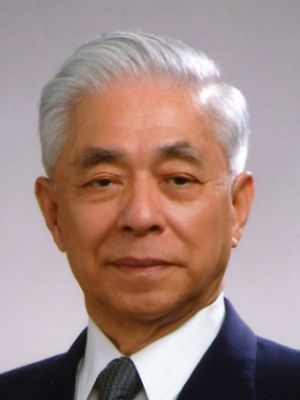Jun-ichi Nishizawa facts for kids
Quick facts for kids
Jun-ichi Nishizawa
西澤 潤一 |
|
|---|---|
 |
|
| Born | September 12, 1926 Sendai, Miyagi Prefecture, Japan
|
| Died | October 21, 2018 (aged 92) Sendai, Miyagi Prefecture, Japan
|
| Nationality | |
| Alma mater | Tohoku University |
| Awards | IEEE Edison Medal (2000) Order of Culture |
| Scientific career | |
| Institutions | Tohoku University Iwate Prefectural University Tokyo Metropolitan University Sophia University |
Jun-ichi Nishizawa (西澤 潤一, Nishizawa Jun'ichi, September 12, 1926 – October 21, 2018) was a brilliant Japanese engineer and inventor. He created many important electronic devices starting in the 1950s. His inventions, like the PIN diode and static induction transistor, helped build the internet and the "Information Age" we live in today. He was even called the "Father of Japanese Microelectronics" because of his huge impact! He was also a professor at Sophia University.
About Jun-ichi Nishizawa
Jun-ichi Nishizawa was born in Sendai, Japan, on September 12, 1926. He studied at Tohoku University, where he earned his first degree in 1948. Later, in 1960, he received his Doctor of Engineering degree from the same university.
In 1953, he joined the Research Institute of Electrical Communication at Tohoku University. He became a professor there and later directed two research institutes. From 1990 to 1996, Nishizawa was the President of Tohoku University. He also became the president of Iwate Prefectural University in 1998.
His Amazing Inventions
Jun-ichi Nishizawa was a true pioneer in electronics. In 1950, he and Y. Watanabe invented the static induction transistor. This was a very important step for modern electronics. The PIN photodiode was also invented by Nishizawa and his team in 1950.
In 1952, he invented the avalanche photodiode. This device is used to detect light. He then invented a solid-state maser in 1955. A maser is like a laser, but it uses microwaves instead of light. He also suggested creating a semiconductor laser in 1957. This was a year before other famous scientists published their work on optical masers.
While working at Tohoku University, he suggested using optical fibers for communication in 1963. This idea led to fiber-optic communication, which is how much of the internet works today! Nishizawa also invented other technologies in the 1960s that helped develop optical fiber communications. One example is the graded-index optical fiber, which helps light travel efficiently through fibers. He patented this special fiber in 1964.
In 1971, he invented the static induction thyristor. This device is used to control large amounts of electrical power.
Awards and Recognition
Nishizawa received many important awards for his work. He was a Life Fellow of the IEEE, which is a big honor for engineers. He was also a Fellow of other important groups, like the Physical Society of Japan.
In 1989, the emperor of Japan gave him the Order of Culture, which is one of Japan's highest honors. He also received the Japan Academy Prize in 1974. Other awards include the IEEE Jack A. Morton Award (1983) and the Honda Prize (1989).
In 2000, the IEEE gave him the Edison Medal, a very prestigious award in electrical engineering. In 2002, the IEEE even created the IEEE Jun-ichi Nishizawa Medal in his honor. He had more than a thousand patents registered under his name, showing how many new ideas he brought to the world!


